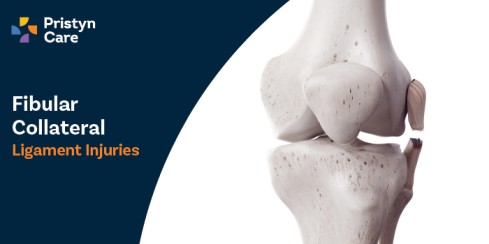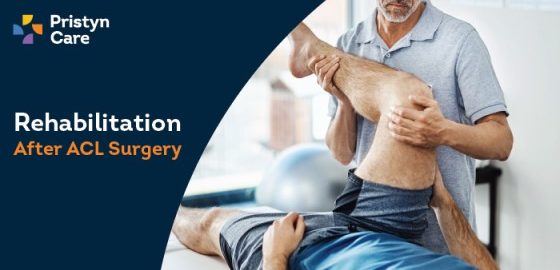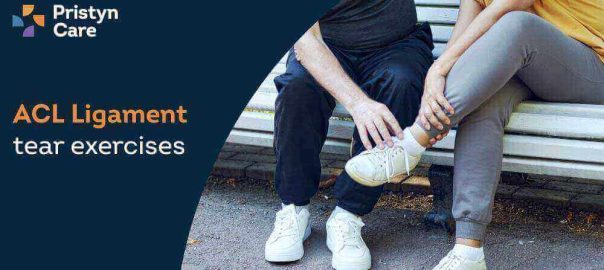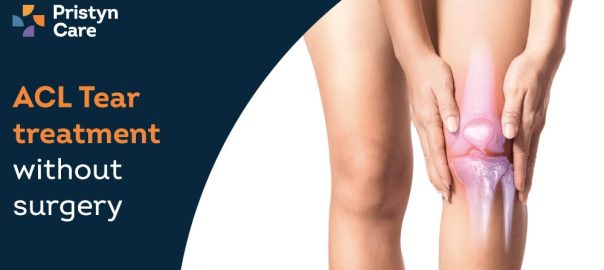![]() Views: 824
Views: 824
Fibular Collateral Ligament (FCL) Injuries: Causes, Symptoms & Treatment Options
This injury can cause pain, swelling, and instability in the knee, making daily tasks difficult. In India, FCL injuries are unfortunately common in sportspeople and individuals involved in high-energy activities. The silver lining is that with early detection and the right treatment, it's possible to recover fully from such injuries.
Dedicated Support at Every Step!
Our Doctors are available 24 hours a day, 7 days a week to help you!
Table of Contents
What is a Fibular Collateral Ligament (FCL) Injury?
No Cost EMI, Hassle-free Insurance Approval
What causes Fibular Collateral Ligament (FCL) Injuries?
Several factors can lead to an FCL injury. These include:
- Contact Forces: A direct blow to the inside of the knee during contact sports like football or basketball can push it outward, causing a strain or tear in the FCL.
- Non-Contact Mechanisms: Even without direct contact, injuries can arise from hyperextension or twisting motions that exert stress on the knee, common in sports requiring quick changes in direction or jumping.
- High-Energy Trauma: More severe trauma such as car accidents or falls may lead to multiple ligament injuries including the FCL, alongside others like the anterior cruciate ligament (ACL) or posterior cruciate ligament (PCL).
- Repetitive Stress: Overuse or repetitive strain during sports activities can lead to chronic injuries over time, although acute injuries are more common.
Types of Fibular Collateral Ligament (FCL) Injuries
The Fibular Collateral Ligament (FCL) plays a crucial role in maintaining the stability of the knee, hence injuries to it can significantly impact one's mobility. Such injuries can be categorised into three main grades:
- Grade I (Sprain): This involves mild stretching of the ligament causing minor pain and swelling. It usually heals with conservative treatment.
- Grade II (Partial Tear): More severe than a sprain, this results in a significant tear, causing moderate pain and instability. Recovery may involve physical therapy and bracing.
- Grade III (Complete Tear): This is a complete rupture of the ligament, resulting in severe pain, instability, and trouble bearing weight. Treatment in Grade III often necessitates surgical intervention.
Symptoms of Fibular Collateral Ligament (FCL) Injuries
Common symptoms associated with FCL injuries are:
- Pain: Localised along the outside of the knee.
- Swelling and Bruising: While swelling increases, bruising becomes noticeable on the outer side of the knee.
- Instability: The knee may give way or feel unstable during movement.
- Stiffness: A reduced range of motion and stiffness in the knee joint.
- Numbness or Weakness: In more severe cases, compression of nearby nerves may lead to numbness or weakness in the foot.
Diagnosis and Evaluation of Fibular Collateral Ligament (FCL) Injuries
To diagnose an FCL injury, doctors rely on several methods such as:
- Medical History: A detailed account of how the injury occurred and symptoms experienced.
- Physical Examination: Assessment of knee stability, range of motion, and tenderness during movement.
- Imaging Tests:
- X-rays: To rule out fractures and assess joint alignment.
- MRI: Provides detailed images of soft tissues to evaluate the extent of ligament damage and any associated injuries
Treatment Options for FCL Injuries
Treatment for FCL injuries varies based on severity:
Non-Surgical Treatment
- Rest, Ice, Compression, Elevation (RICE): Initial management to reduce swelling and pain.
- Bracing: Use of a knee brace to stabilize the joint during healing.
- Physical Therapy: Rehabilitation exercises to restore strength and range of motion, especially for Grade I and II injuries.
- Medications: Over-the-counter pain relievers or anti-inflammatory medications to manage discomfort.
Surgical Treatment
- Indications for Surgery: Generally recommended for Grade III tears or when there are associated injuries to other ligaments (e.g., ACL or PCL).
- Reconstruction Procedure: Involves replacing the torn ligament with a graft (either autograft from the patient or allograft from a donor). The surgery is often performed arthroscopically alongside other necessary repairs.
- Post-Surgery Rehabilitation: Focuses on pain management, restoring mobility, and strengthening the knee. Full recovery may take several months, particularly for athletes looking to return to sports
When is a Fibular Collateral Ligament (FCL) Injury considered serious?
The Fibular Collateral Ligament (FCL) plays a crucial role in the stability and functioning of your knee. There are certain situations when an FCL injury becomes quite serious, these include:
- Grade III Tear: This is a complete rupture of the Fibular Collateral Ligament and is often accompanied by significant pain, instability which can severely affect the knee function and mobility.
- Multi-Ligament Injuries: If the FCL, along with other ligaments such as the ACL or PCL, is damaged, it heightens the risk of chronic instability and long-term complications.
- Neurological Symptoms: If symptoms like numbness or weakness in the foot are experienced, this may indicate nerve damage and requires immediate medical care.
- Persistent Symptoms: If symptoms such as pain, swelling or instability do not improve with conservative treatment, this calls for surgical intervention.
Prevention of Fibular Collateral Ligament (FCL) Injuries
Whilst it's not always possible to prevent an FCL injury, especially due to accidents or contact sports, there are ways to reduce your risk. Regular strength training and flexibility exercises can help to strengthen your knee muscles and enhance joint stability. Protective gear, such as knee braces, should be worn during sports activities. If you feel any pain during exercise or sports, ensure you stop and rest to avoid exacerbating the injury. For persistent problems with the knee, consult with an orthopedic doctor who specializes in sports injuries.
Myths & Facts about Fibular Collateral Ligament (FCL) Injuries
Misinformation can lead to unnecessary worry and inappropriate self-treatment. It's essential to separate fact from fiction regarding FCL injuries.
Myths:
- FCL injuries only occur in contact sports - In reality, they can also occur from non-contact mechanisms like awkward landings or sudden changes in direction.
- All FCL injuries require surgery - Many FCL injuries, especially Grade I and some Grade II strains, can be treated successfully with conservative measures like rest and physical therapy.
- FCL injury always leads to long-term disability - With the correct treatment and rehabilitation, many individuals can return to their full function and sports activity.
Facts:
- FCL is crucial for stabilising the knee during side-to-side movements.
- Isolated FCL injuries are rare; they often occur alongside injuries to other knee structures.
- Recovery time varies based on injury severity; mild sprains may heal within weeks, while severe tears can take several months.
When to consult a Doctor for Fibular Collateral Ligament (FCL) Injuries?
If you're experiencing pain on the outer part of your knee, coupled with swelling, instability, and difficulty bearing weight, these are signs of a potential Fibular Collateral Ligament strain. It's important to seek professional medical advice as early as possible. Consulting an orthopaedic specialist will ensure accurate diagnosis through physical examinations, imaging tests like X-rays and MRIs, and specific stress tests for knee stability. A specialist can provide the best treatment plan for your condition.
Questions to ask your Doctor about Fibular Collateral Ligament (FCL) Injuries
When consulting your doctor about a potential FCL injury, here are some essential questions you should ask:
- How is an FCL injury diagnosed?
- What are the treatment options available for my condition?
- Will I require surgery for my FCL injury?
- What is the recovery time after treatment?
- Can my normal activities aggravate the FCL injury?
- What exercises or activities should I avoid to prevent worsening of the injury?
- How can I strengthen my knee post-recovery?
- Are there any long-term effects of an FCL injury?
FAQs
- Where is the Fibular Collateral Ligament located in the body?
The Fibular Collateral Ligament (FCL) is part of the knee structure. It runs along the outside of the knee, connecting the femur (thigh bone) to the fibula (smaller bone in the lower leg). The FCL helps stabilise the knee and limit its outward movement, making it vital for maintaining balance and performing activities that require a wide range of motion. - How common are injuries to the Fibular Collateral Ligament?
Fibular collateral ligament injuries are not as common as some other knee injuries, such as anterior cruciate ligament (ACL) tear. However, they can still occur, particularly in people who participate in sports that involve sudden changes in direction or collision, such as football or hockey. - What are typical symptoms of a Fibular Collateral Ligament strain?
Common symptoms of a Fibular Collateral Ligament strain include pain on the outside of the knee, swelling in the area, and difficulty walking or moving the leg. You may also feel instability or a feeling of "giving way" when trying to stand or walk. - How is a Fibular Collateral Ligament tear different from a strain?
A tear of the Fibular Collateral Ligament is a more severe injury than a strain. While a strain involves damage to a few fibers causing mild to moderate discomfort, a tear on the other hand means that most or all of the fibers are damaged. This can cause significant pain, swelling and instability. - How can I avoid injuring my Fibular Collateral Ligament?
To prevent injuring your FCL, it's essential to maintain good physical fitness and flexibility. Regular strength training exercises can help build muscle support around your knees. Additionally, learning and using correct techniques while participating in sports or other physical activities can also reduce your risk. - What treatment options are available for a Fibular Collateral Ligament injury?
Treatment options for a Fibular Collateral Ligament injury depend on the severity of the injury. Mild to moderate strains can often be managed with rest, ice, compression, and elevation (RICE method). Physiotherapy is also beneficial in promoting healing and restoring normal function. In severe cases, such as complete tears, surgical intervention may be required. - How long does recovery from a Fibular Collateral Ligament injury typically take?
Recovery time can vary based on the severity of the injury and your individual health status. Minor strains might heal within a few weeks with appropriate care and rest. More severe injuries, like complete tears that require surgery, might take several months to heal completely.
Can I fully recover from a severe Fibular Collateral Ligament tear?
Yes, with proper treatment and a carefully followed rehabilitation programme, you can fully recover from a severe FCL tear. It's essential to follow your doctor's advice and keep up with physiotherapy to regain strength and mobility in your knee.











